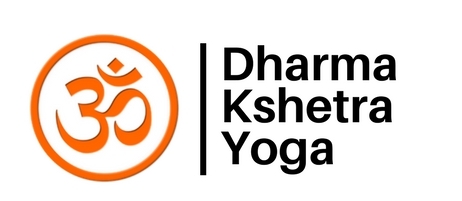Something big is happening in the nation. A group of disenfranchised people, distinguished by skin color, has been stripped of their property and wealth. They have been publicly assaulted by those in power while good people looked on, too scared to do anything. When these wronged people can not get justice by following the rules that those in power set for them - rules specifically designed to keep them poor and unable to gain political representation - they rise up to take back what is theirs.
Are these current events? No - this is the story of the Bhagavad Gita, a centuries old yoga text. Its setting and its lessons are, unfortunately, still applicable today.
The Bhagavad Gita is part of a much larger work, the Mahabharata, which outlines the political history of the Indian subcontinent in a series of stories. Ideally, these stories show us how to live a better life by making us aware of the consequences of our actions. In the Mahabharata, people in power have unfairly stolen the throne from a group named for the color of their father’s skin: the Pandavas (which, ironically in relation to today’s events, means “the pale ones”). The Pandavas wait only 13 years before they are angry enough to take back their kingdom. In this time, they have amassed allies who are willing to fight and die with them. But the Pandavas do not want to start a battle - they just want what is theirs. Unsurprisingly, those who have been their oppressors don’t want to give anything up.
So everyone lines up, the Pandavas on one side and their oppressors on the other. Arjuna (whose name means “white”) is one of the Pandavas, ready to fight beside his best friend, Krishna (whose name means “dark,” and whose skin is the color of a thundercloud). Arjuna realizes that to reclaim what is his, he will need to confront his teachers and his elders, who helped create and still support the system that has treated him so unfairly. Arjuna remembers what he has been taught by them: that anger is bad, that confrontation and conflict are bad, that those who start trouble will bring destruction on their families. He has internalized these instructions so thoroughly that he becomes confused and sits down, ready to give up rather than be the cause of serious trouble. Krishna helps Arjuna to sort out what is conditioning and what is Arjuna’s truth, so that Arjuna can take the steps needed to do what must be done: make his nation a true example of justice for all.
Does any of this, any of it at all, sound familiar? The wonder of the Bhagavad Gita is that it provides solid guidance and advice for those of us struggling with the turmoil of this time. Krishna takes Arjuna through a series of lessons that help Arjuna decide what to do, not just for himself, but for the good of all the world. By the end, Arjuna is ready to apply some of Krishna’s teachings, such as realizing how fortunate he is to have been born during a time when his efforts can truly make a difference - when they can stop the patterns of the past and restore the virtues that once made his land famous.
The stories are clear: if systems of inequality remain in place, there will be civil war. Can we change history? Can we speak up, be willing to do the work on ourselves to see what is truth and what is conditioning, and then harness our fear to move forward instead of running away? It’s Arjuna’s choice. It’s our choice. We have the power - if we can embrace the opportunity of living in this special moment.
Atmadarshan’s passion is sharing ways that the Bhagavad Gita can help you with your modern life. Watch for our upcoming classes and workshops on its practical wisdom!
Photo by Life Matters from Pexels

